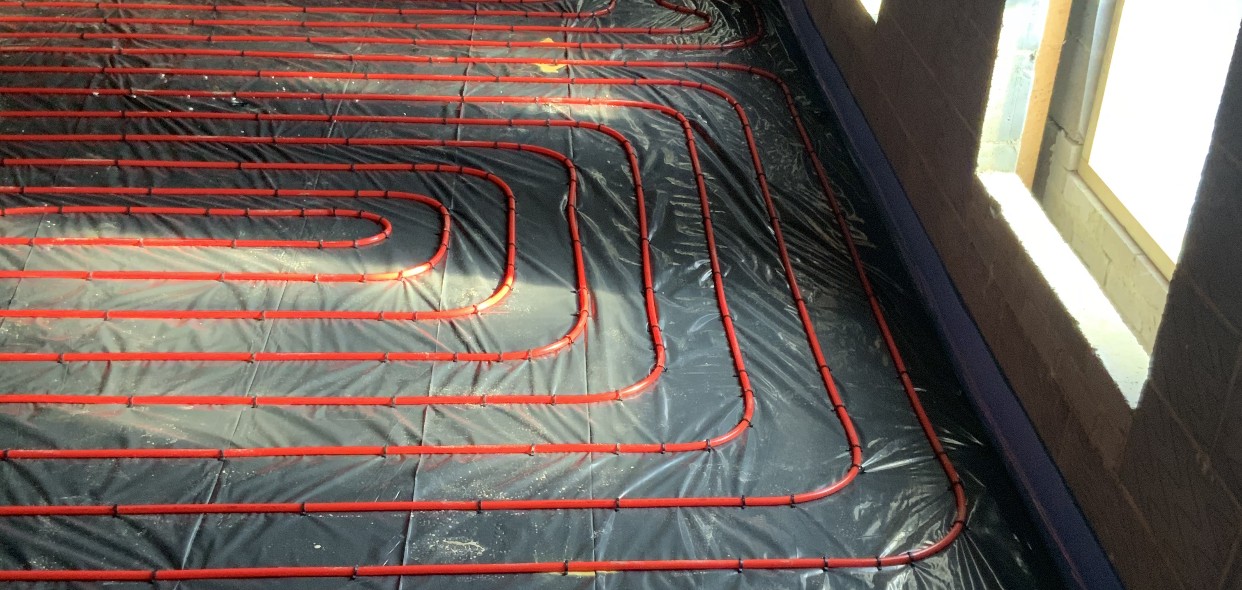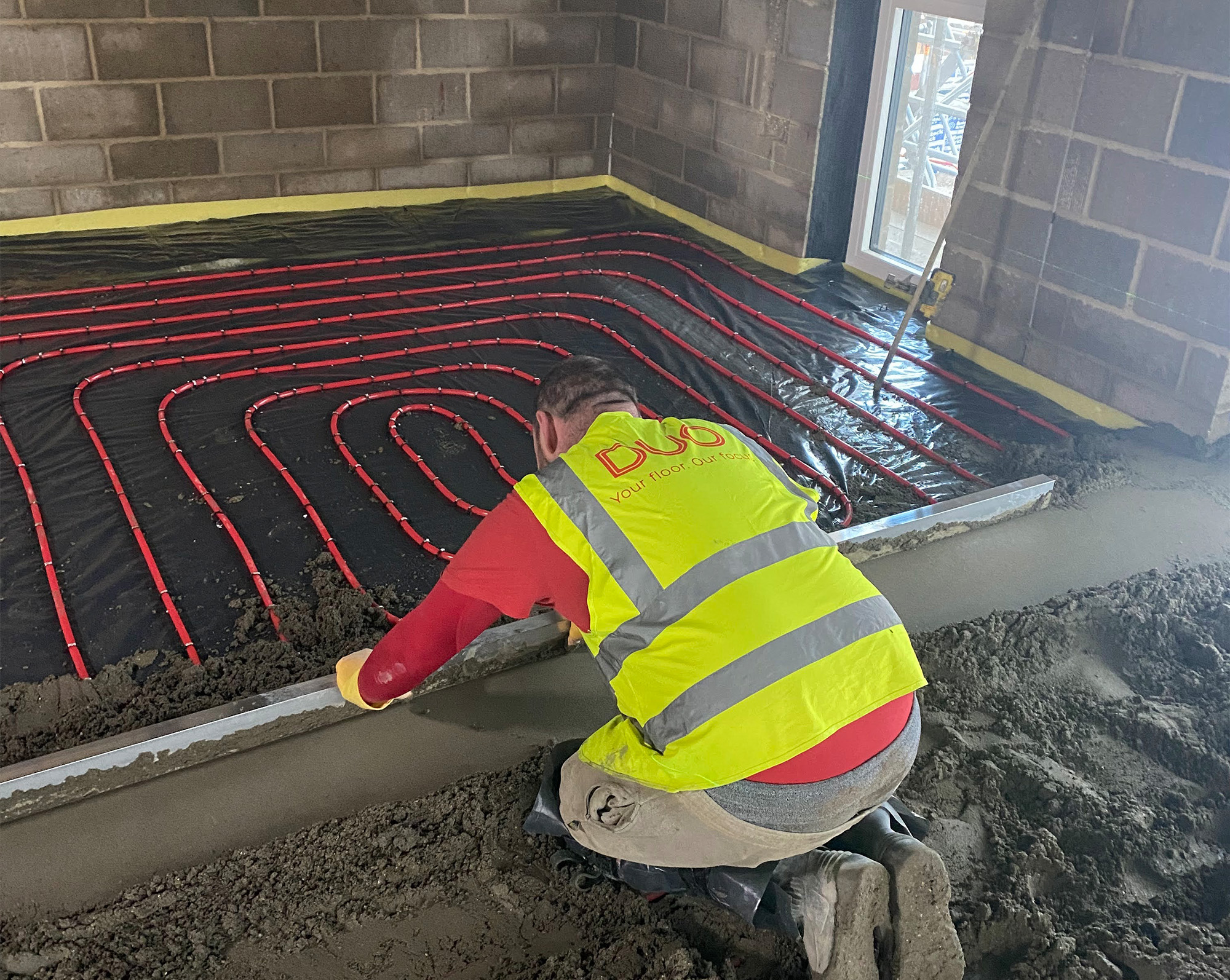Thinking about installing underfloor heating in a commercial space? It’s a smart upgrade, but it’s important to know what you’re getting into cost-wise. The commercial underfloor heating cost can vary quite a bit depending on the size of the space, the type of system you choose, and how complicated the installation is. Whether you’re outfitting an office, retail store, or warehouse, knowing where your money goes can help you plan better and avoid surprises. This article breaks down the key factors that influence pricing so you can budget with more confidence and make choices that fit your project.
Type of Underfloor Heating System
The kind of system you choose plays a big part in how much you’ll end up spending. There are two main options: electric and water-based. Each works differently and comes with its own set of costs.
Electric underfloor heating uses wires or mats installed beneath the floor. These systems usually cost less to install. The setup is quicker, and there’s less disruption during fitting. That can be helpful if time is tight or you’re working on a smaller space. But once it’s running, it tends to use more energy than water-based setups. That means your bills over time could be higher. Water-based systems, also called hydronic systems, push warm water through pipes under the floor surface. This type takes longer to install and often needs more planning upfront. It may involve changes to flooring or extra plumbing tasks. Because of that, the initial price tag is usually steeper compared to electric versions.
However, these systems often cost less to run month after month, especially in large areas or buildings used all day long. They connect easily to energy-saving options like heat pumps or solar panels too, which can reduce usage costs even further over time. The size of your space also matters when choosing between them. For smaller rooms or places used for short periods, electric might make more sense despite higher operating expenses later on. For larger areas with consistent use; like offices, gyms, or retail floors, a water-based system might balance out better financially down the road.
Choosing between these two affects not just what you pay upfront but what you’ll keep paying every year after that. So when thinking about commercial underfloor heating cost, it’s important to consider both start-up expenses and future utility charges before deciding which setup makes sense for your space and usage pattern.

Size and Layout of the Space
The total area being heated plays a big role in how much you’ll pay. Larger commercial spaces need more materials like piping, insulation, and heating mats. They also take longer to install, which means higher labor charges. If you’re working with thousands of square feet, expect your overall bill to rise fast.
The shape of the space matters too. A wide open room is easier to handle than one with lots of corners or walls breaking up the floor plan. Spaces with many rooms or odd shapes often require extra planning and custom fitting. This can slow down installation and increase labor time. Complex layouts may call for additional zoning systems or controls to manage heat in different areas. That adds cost as well, not just for setup but also for ongoing maintenance later on. Workers might need more fittings or special tools to deal with tight spots or unusual angles.
If you’re retrofitting an older building, layout challenges can become even bigger issues. Walls that weren’t designed with underfloor heating in mind may cause delays or require adjustments during the job. All these factors directly impact commercial underfloor heating cost from start to finish. A simple layout keeps things straightforward and usually less expensive overall, while a tricky design pushes costs upward through added time and gear.
Planning early helps avoid surprises here. Knowing how your floor plan affects installation steps lets you budget more accurately before anything starts happening on-site.
Impact of Insulation and Flooring Materials
Insulation plays a big role in how well underfloor heating works. Without proper insulation, heat escapes through the floor instead of moving up into the room. This means the system has to run longer to reach the same temperature. That leads to higher energy use and more spending over time. Good insulation helps keep warmth where it’s needed, which can lower your bills.
The type of flooring also makes a difference. Hard surfaces like tile or stone allow heat to pass through quickly. This helps rooms warm up faster and keeps temperatures steady. Wood floors can still be used, but they may take longer to heat since wood doesn’t transfer warmth as fast. Some kinds of wood may even expand or shrink with changes in temperature, which can affect long-term performance. Carpet is another option but needs special attention. Thick padding under carpet acts as a barrier and slows down heat movement. If carpet is too dense, it might stop enough warmth from reaching the surface, making the system less effective.
Installation steps change depending on what materials you pick. Tile often needs an extra layer for support before heating elements go in place. With wood or carpet, installers might need different tools or methods to set things up correctly without damaging anything. All these choices—insulation quality and flooring types, can shift your total commercial underfloor heating cost quite a bit. A better setup may cost more at first but could save money later by using power more efficiently.
Choosing materials that match your space matters for both comfort and expenses over time. Each material responds differently to heat and affects how well the whole system works day-to-day.
How “Commercial Underfloor Heating Cost” Varies by Project Scope
The total price of installing underfloor heating in a commercial space depends on several parts of the job. One big factor is how the building will be used. A warehouse, for example, has different needs than a hotel or office. Spaces with heavy foot traffic or large open areas may need bigger systems, which can raise costs. Zoning rules also play a role. Some buildings need separate temperature zones to meet local codes or comfort needs. More zones mean more controls and planning, which adds to the bill. If you’re working with older buildings, matching new heating systems with existing HVAC setups can take more time and effort.
Every project comes with its own layout and challenges. A simple floor plan is easier to manage than one full of corners or special features. Custom layouts often require extra labor and materials, which affect the budget. Some business owners want solutions that match their long-term goals. They might pick energy-saving options that cost more up front but save money later through lower bills and fewer repairs. These personalised systems often include timers, sensors, or smart controls that need expert setup.
Commercial underfloor heating cost also changes based on how much prep is needed before installation starts. Removing old flooring or fixing uneven surfaces takes extra time and resources. Working around business hours may stretch out timelines too. If crews can only install during off-hours to avoid disrupting operations, labor charges may increase.
Each of these choices affects the final amount spent on underfloor heating in a workplace setting, some right away and others over time as use continues.

Making Smart Decisions for Your Heating Investment
When planning a heating solution for a commercial space, understanding the key factors that influence cost is essential. From choosing between electric or hydronic systems to considering the size, layout, and insulation of your building, each element plays a role in shaping your commercial underfloor heating cost. Flooring materials and overall project scope can also significantly affect your budget. By taking these variables into account early on, you can make informed decisions that align with both your comfort needs and financial goals. A bit of upfront planning goes a long way toward achieving efficient and cost-effective results.


